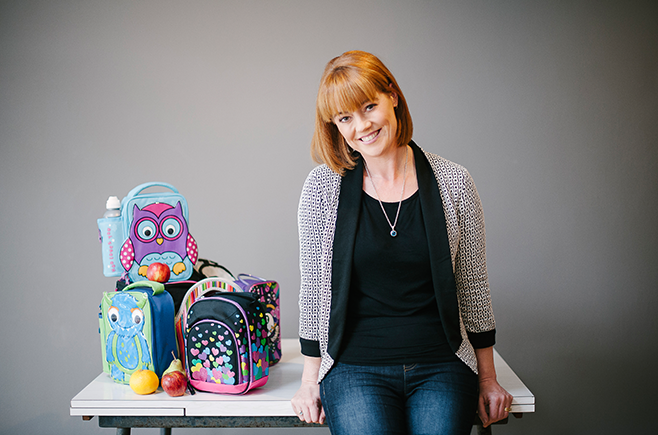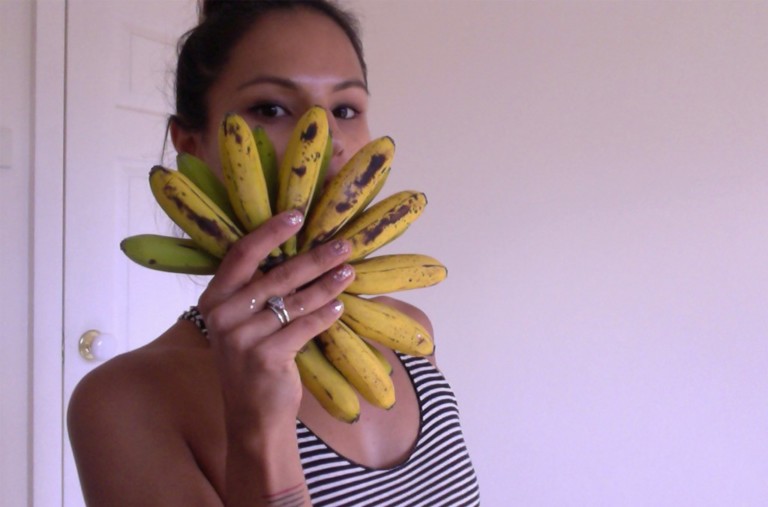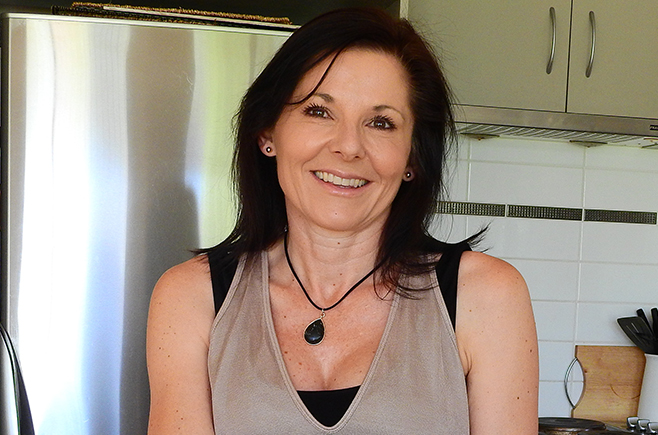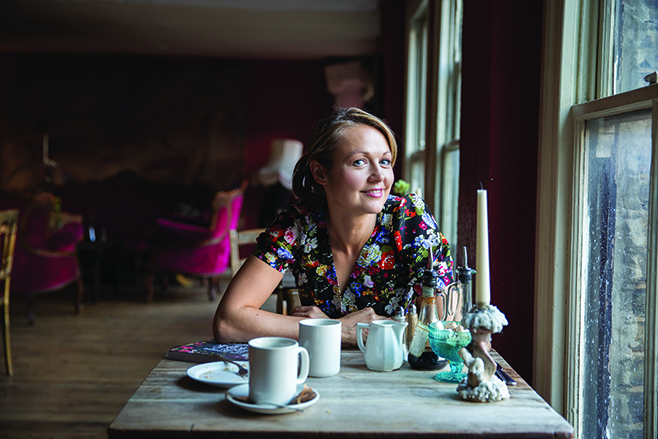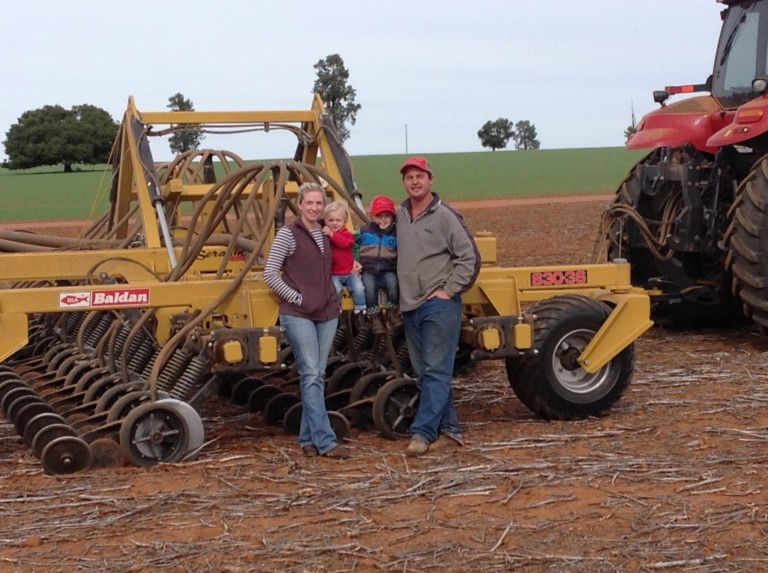Meet Kate Crocker, the busy mum, lawyer and author of Gluten-Free for Lunchboxes.
Tell us a bit about your background and how you came to launch your blog Gluten-free for Lunchboxes?
I’m a lawyer, which seems a far cry from the food blogging world. But I’ve always been creative. Even when I was practising law, I spent my spare time playing my violin, singing, salsa dancing and, of course, cooking.
I’ve always enjoyed cooking for others – I think it’s a fundamental, nurturing things to do. It’s a big hug on a plate!
Nowadays, I have three children. Our middle child was diagnosed with coeliac disease when she was aged 4 ½. At the time, we were in the middle of her kindergarten year; so I was packing lunchboxes for her about three times a week.
We had a fantastic kindy that placed a big emphasis on good food choices, which really magnified the issue of gluten-free lunchboxes. Processed foods are often high in additives, sugar, salt – all the bad stuff. This was true of many gluten-free processed foods. I was perfectly happy to cook, but I struggled to find lunchbox-friendly recipes. I felt really stretched with our eldest child at school, one at kindy with special dietary requirements and a baby who was ready to start solids. I needed easy lunchbox ideas.
So I decided to start my own blow. I barely knew what a blog was, but I thought that if I was struggling for ideas, other parents would be as well. My initial idea was to post links to good recipes that I’d found trawling the internet. I quickly realised that it would never do because there weren’t many simple, quick and nutritious recipes that would suit a lunchbox. So I found myself developing the recipes. And now here I am!
How did you explain coeliac disease to your daughter after the diagnosis?
Our daughter was 4 ½ when she was diagnosed. At the time she was a sick and unhappy little girl. She had terrible tummy aches, she was so anaemic that she looked pale and grey. She had dark circles under her eyes, was exhausted all the time and her growth had slowed alarmingly.
Coeliac disease was in the family. My husband’s niece and nephew were diagnosed about 10 years prior—so we were used to catering for them and the words “gluten-free” or “GF” were part of usual family interaction.
Before our daughter’s endoscopy, my husband and I had discussed with her what it all might mean. We explained that gluten might be making her feel sick. We told her that some foods had gluten but that there were lots of delicious foods that were gluten-free.
But it was my sister-in-law, mother of the coeliac niece and nephew, who was absolutely brilliant at explaining it and bringing our daughter on board. Once we had the diagnosis, my sister-in-law welcomed our daughter to the Coeliac Club and talked about my coeliac niece and nephew and how they’d all be in the club together. We still talk about people who are in the Coeliac Club—the club is growing all the time as more and more of the people we know are being diagnosed!
My sister-in-law also gave our daughter a guided tour of her pantry so that she could see all the gluten-free food (including special treats). It was a huge help.
Our daughter’s diagnosis came at a good age. She was old enough to understand that the gluten was making her sick. She was able to remember how bad it made her feel, but not old enough to crave the delicious fluffy texture of a finger bun or the crisp flakiness of filo pastry.
Have her school and other parents been supportive? I imagine birthday parties are difficult?
Right from diagnosis, kindy and school have been great. They’ve watched her and helped her develop abilities to care for herself (an essential life skill is her ability to ask an adult whether the food on offer is gluten-free). The school has kept me up-to-date with any food activities in which she would be participating. Most of the time I am advised in advance of the activity, which means I can supply a gluten-free alternative.
Of course, there are always little hiccups. For example, commercial playdough has gluten in it. The teachers and I didn’t realise that before she did a school activity; so we slipped a bit there, but that happens. It’s a continual education process for all of us.
Other parents have been very supportive. I’ve always supplied food for her playdates and I will pack a special lunchbox for birthday parties (including a slice of gluten-free birthday cake and a gluten-free lolly bag). My philosophy is that if this makes it easier for other parents to have our daughter as a guest, hopefully she’ll be invited back. Also, it takes the worry out of it for the other parents.
But increasingly other parents are anticipating our daughter’s food needs and are very happy to cater for her. It really is fantastic for someone to keep a few gluten-free items in their pantry just for our daughter. Some parents, knowing our daughter will be coming, even have put on a gluten-free spread at a birthday party! It is very touching and always greatly appreciated.
It’s easy to focus on the negative when you receive confirmation of coeliac disease, but flipping that, what have been some of your positive experiences?’
I did feel apprehensive about a possible big dietary change, especially because at the time my baby was ready to start solids and my kitchen had limited space. It was a big deal.
But I was more concerned that we wouldn’t get a coeliac diagnosis. If coeliac disease was not the reason for our sickly child, that meant there was something else wrong with her and we didn’t know what. Bottom line—there are far, far worse conditions to have. Coeliac disease currently may have no cure, but for many people, it can be managed perfectly well by following the one golden rule: no gluten.
I often talk about the miracle that we witnessed with our girl. People must be sick of hearing it, but honestly, it was stunning. Just thinking about it fills me with emotion, even now.
Within two weeks of going gluten-free, our daughter was happier and more energetic. She walked and skipped to kindy, instead of being taken in the pram because she didn’t have enough energy to cope with the five-minute walk. Within six weeks, she was able to concentrate for prolonged periods, and learn and enquire about all sorts of things: “How does the brain work, Mummy?” I hadn’t realised until that point that she’d been in a brain fog. It was as though the sun had peeked out through the clouds.
Her diagnosis was the best thing to happen to our daughter. Thanks to her gluten-free diet, she is now a thriving, bright, healthy eight year old girl. If we ever needed more proof, the growth charts say it all. Since her diagnosis, she has gained more than 13 kilograms and is a picture of health. She has blossomed into an artistic, musical, funny, sharp-witted-girl with a cracking mischievous streak. It has been an amazing, brilliant and inspirational time for us to get to know our daughter.
Yes, sometimes it’s too hard, or too much of a risk, to order a hot chocolate in a café when it is quite obvious the counter staff have never even heard of gluten-free. Sometimes, for various reasons, I haven’t catered for her and so she misses out when there is a morning tea or a sausage sizzle. But honestly, in the scheme of things, it doesn’t matter. I have a healthy child because she’s gluten-free.
See Kates’s tuna and rice patties here and for more of gluten-free lunchboxes recipes visit Gluten-Free For Lunchboxes.

